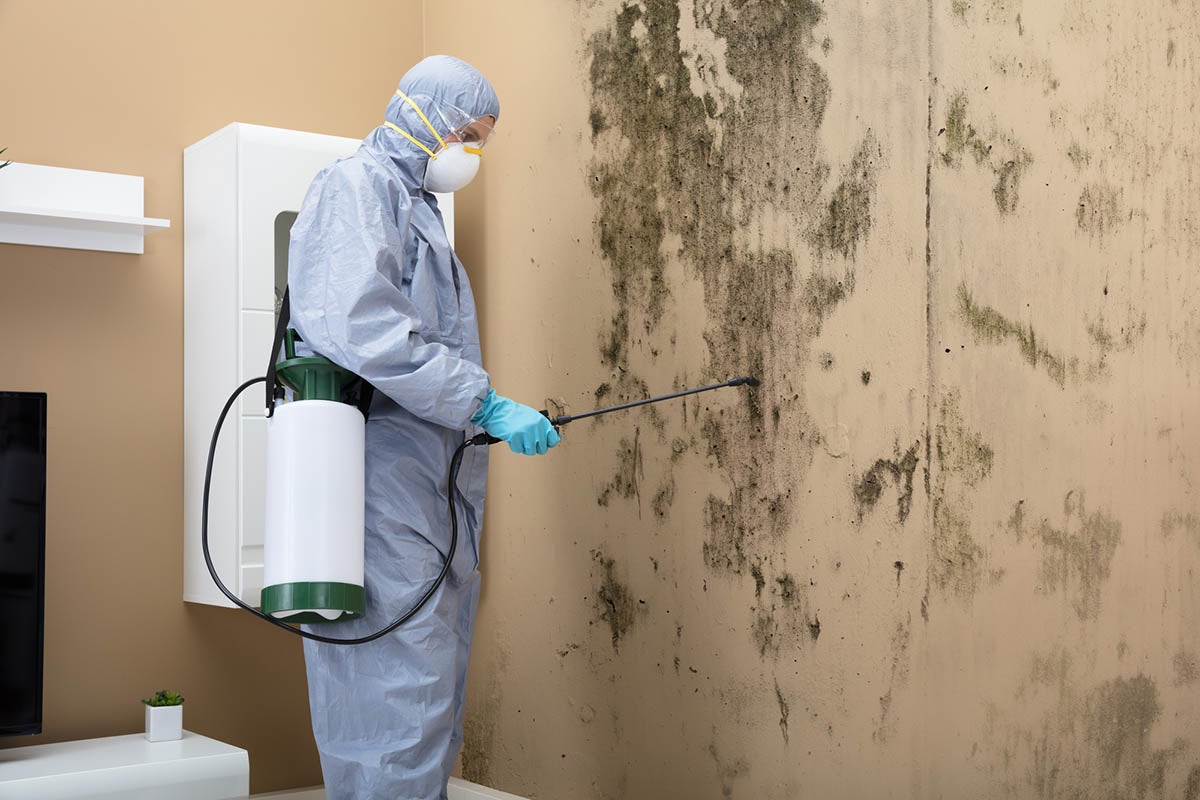Your Ultimate Overview to Article Mold And Mildew Remediation Techniques
Browsing the world of post-mold remediation methods is a careful process that demands focus to detail and a comprehensive understanding of the details entailed. In the consequences of mold and mildew invasion, knowing just how to successfully remove the mold and mildew and stop its reoccurrence is extremely important for preserving a healthy and balanced indoor environment. From choosing the right cleansing and decontaminating techniques to carrying out techniques for long-term mold and mildew prevention, each action in the remediation trip plays an important role in ensuring a successful end result. As we start this expedition of post-mold removal strategies, we will reveal the essential strategies and best techniques that can help you recover your area to its pre-mold condition and safeguard it versus future mold and mildew risks.
Understanding Post-Mold Removal Refine
After completing the mold remediation procedure, it is essential to understand the post-mold remediation techniques that are necessary to ensure a thorough and efficient cleanup. When the mold and mildew has been eliminated, the following step involves cleansing and disinfecting the impacted locations to avoid any regrowth of mold. This includes utilizing specialized cleaning up representatives to clean down surface areas and kill any kind of continuing to be mold and mildew spores. It is vital to dry the location totally to inhibit the growth of mold and mildew in the future (what to do after mold remediation). Correct air flow and dehumidification can aid in this procedure.
In addition, conducting a last evaluation post-remediation is crucial to guarantee that all mold has been successfully eliminated. If the evaluation exposes any sticking around mold, extra remediation might be essential.
Reliable Cleaning Up and Decontaminating Techniques

Protecting Against Future Mold And Mildew Development

Importance of Correct Air Flow
Correct ventilation plays a critical function in preventing moisture build-up, a crucial aspect in mold development within interior atmospheres. Reliable air flow systems help get rid of excess humidity from the air, minimizing the opportunities of mold and mildew spores discovering the dampness they require to sprout and spread out. Without adequate ventilation, interior rooms can end up being a reproduction ground for mold, resulting in potential wellness threats and structural damages.
By guaranteeing appropriate air circulation, air flow systems can also assist in drying wet areas a lot more rapidly after water damage or flooding events, better deterring mold and mildew development. Post Remediation verification. In spaces like washrooms, attics, cellars, and kitchens where moisture levels often tend to be greater, installing and keeping efficient ventilation systems is crucial in avoiding mold infestations

Tracking and Upkeep Tips
Given the essential function that appropriate air flow plays in avoiding mold and mildew growth, it is vital to develop reliable tracking and maintenance pointers to make sure the continued performance of ventilation systems. Routine evaluations of ventilation read the full info here systems need to be performed to look for any type of signs of blockages, leaks, or breakdowns that could restrain proper airflow. Tracking moisture degrees within the residential property is also crucial, as high moisture can add to mold development. Installing a hygrometer can aid track moisture levels and alert home owners to any type of spikes that might call for attention. In addition, making certain that air filters are consistently cleaned or changed is necessary for maintaining the performance of the ventilation system. Implementing a routine for routine maintenance jobs, such as duct cleansing and cooling and heating system assessments, can assist protect against concerns before they rise. By staying alert and proactive to the condition of ventilation systems, homeowner can properly alleviate the risk of mold and mildew regrowth and keep a healthy and balanced mold removal using bleach interior atmosphere.
Verdict
Finally, post-mold removal methods are essential for guaranteeing a risk-free and clean setting. Recognizing the process, implementing effective cleaning and sanitizing approaches, protecting against future mold growth, maintaining correct ventilation, and routine surveillance are all critical actions in the remediation process. By following these standards, you can efficiently remove mold and prevent its return, promoting a healthy and balanced living or working space for all owners.
In the aftermath of mold infestation, recognizing just how to properly eliminate the mold and stop its reoccurrence is paramount for maintaining a healthy indoor setting. As soon as the mold and mildew has been removed, the next action entails cleaning and decontaminating the influenced areas to protect against any type of regrowth of mold and mildew - After mold remediation. After eliminating visible mold and mildew growth, it is important to clean up all surface areas in the affected location to remove any kind of continuing to be mold and mildew spores. To additionally improve mold and mildew prevention actions, it is necessary to address underlying issues that initially led to mold development.Offered the essential function that proper ventilation plays in avoiding mold growth, it is critical to establish reliable surveillance and maintenance suggestions to ensure the continued performance of air flow systems